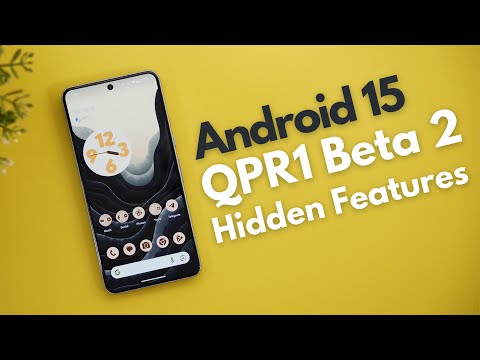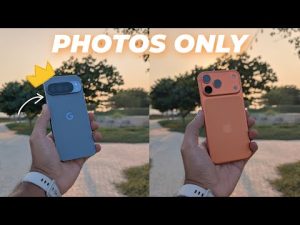
caption
Hidden Features in Android 15 QPR 1 Beta 2
Hello, everyone, and welcome to the channel! Here’s my follow-up video on Android 15 QPR 1 Beta 2. Today, I will show you the hidden features I spotted after using this build for a few days. So, without further ado, let’s jump in.
Charging Optimization
Let’s start with the most exciting feature, which you can find under Settings and then Battery. You will notice that the Adaptive Charging menu is now called Charging Optimization. When you go inside, you will see Adaptive Charging that we used to have, in addition to the ability to limit the charging to 80%, which will extend your battery lifespan. This is something all other manufacturers have offered for a very long time, and we finally got it with Android 15. I also spotted this neat feature after activating the limit to 80% option. If your phone is already above 80% and you plug in the charger, you will see a new shield icon on top of the battery to let you know that your charger is blocked to save your battery from overcharging above 80%.
Redesigned Discover Feed
The second change I noticed is the redesigned Discover feed. I’m not sure if it’s a coincidence or something related to this build, but here is how it looks on Android 14. You will note that each article now has its own container and floats over the background instead of filling the entire width. Plus, we no longer have these horizontal separators, but you will see a small gap between articles. In my opinion, it looks much better than before. Even the cards at the top have a different look compared to the previous version. Let me know in the comments which one you like more.
Sound and Vibration Panel
Now, let’s move on to the Sound and Vibration panel. You will notice this new Spatial Audio toggle. If you have the Pixel Buds Pro that supports the feature, tapping on it will expand into a small overlay card that will allow you to turn off the feature, set it to fixed, or activate the head tracking. Once you finish your selection, you can tap on the X, and it will show you this fill color to indicate that the feature is activated.
Quick Settings Brightness Slider
Change number four is in the Quick Settings brightness slider. You will notice here, when I drag my finger over it, you will see a shaded dot exactly at the center that works as a reference for the 50% mark.
New Animations
I also spotted a couple of new animations in this build. The first one is in the split-screen view. For reference, here is Android 14 on the left. Take a look at this animation when I swap the windows. It doesn’t only look different, but it replaces the app preview with the app icon only. On Android 14, the animation is flat, and it doesn’t replace the app preview while transitioning, while here it’s totally different.
Wallpaper and Style App
The second animation is in the Wallpaper and Style app. You’ll notice here, when I change the color palette, that the animation on Android 15 is different. It has this kind of glowing dot at the center that expands to the entire screen, which doesn’t exist in Android 14.
Gboard Changes
One more change I spotted in Gboard, on top of the ones I mentioned in my previous video, is that the most relevant suggested word in the suggestions strip gets highlighted in bold, which is not the case on Android 14.
Screen Casting
The last change I’m going to show you is something I missed mentioning in my previous video. When you cast your phone’s screen, you will see the same pill of the screen recorder here at the top left. It shows the time, and when you tap on it, it will allow you to stop the casting as well.
Performance Overview
So, that’s it when it comes to the features. Now, let’s talk about the performance. I didn’t spot any performance issues while filming this video. The apps open instantly, and the scrolling is pretty good, but the phone is slightly warmer than usual. Now, let’s take a look at the Geekbench score numbers. After a fresh install of QPR 1 Beta 1, I got a multicore score of 4,000 and a single-core score of 1,500. But after using the same QPR 1 Beta 1 for a while, the multicore score became noticeably less at 3,500. After installing QPR 1 Beta 2, the score is 3,800 and 1,700 for the single core. So, overall, the numbers are not consistent, and the performance is not bad, but all I can say is the phone is warmer than expected.
If you’re already using QPR 1 Beta 2, please let me know in the comments about your performance and battery. That’s pretty much it for today. Those are all the hidden features I wanted to show you in QPR 1 Beta 2. Please let me know in the comments if I missed anything. Thanks so much for watching, and see you in the next video!


